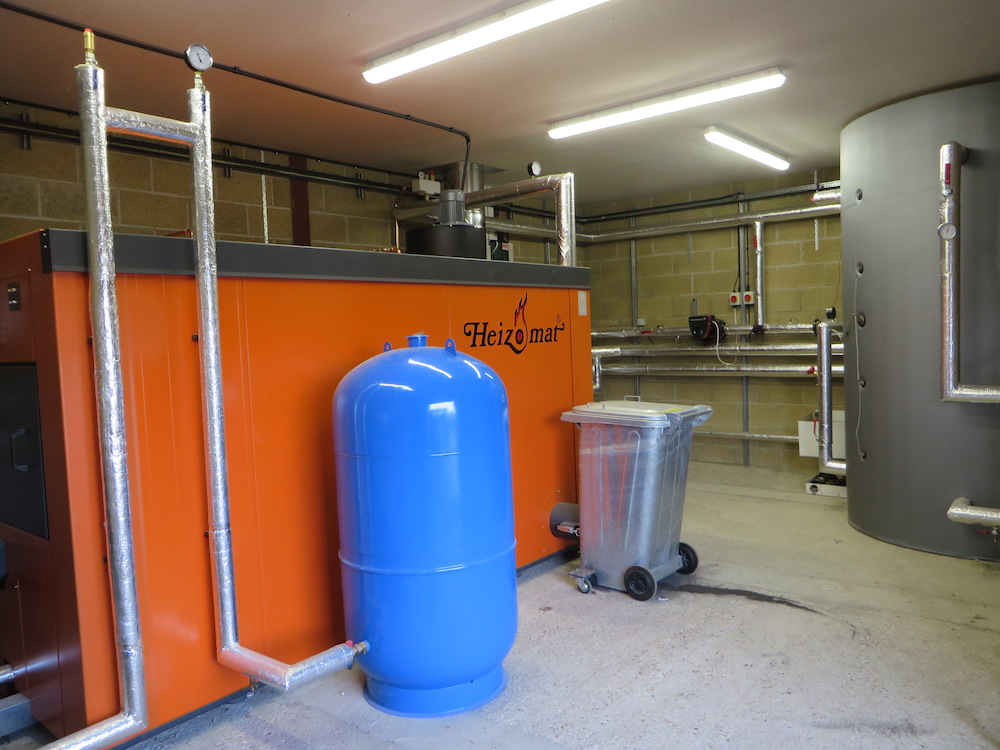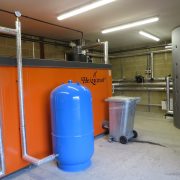A very Green (and Orange) Solution
An eco-friendly answer to heating ‘The longest Barn in East Anglia’
Our client came to us with the conundrum of finding an efficient system to heat her Grade II listed medieval barn, thought to be one of the longest in East Anglia.
There were several issues that needed to be addressed, the main one being the capital cost of a new heating system, for a building, which had a varied but intermittent use. In isolation the initial cost of heating of the medieval barn was uneconomic, however through further study the need for a new modern grain drying facility was also identified.
This solution would require a different approach to the normal solution of a local heating source. The idea of a centralised district heating scheme was tabled and explored; only 7 years before hand Nicholas Jacob Architects had refurbished the main house and had considered renewable heat sources, which had been discounted at the time because of the considerable cost. This time however, with the proposal to construct a purpose built grain barn, connect the three houses that exist on the site and the needed to offer human comfort when the medieval barn is for events such as weddings and opera we suggested a solution of a commercial woodchip biomass boiler; a solution that we had developed for other country estates.

To meet the varying heating demands we specified the Heizomat RHK 204. To put it simply, the boiler is a huge 200kw wood burner, measuring at 3.2m long, 1.2m wide and 2.2m high, is quite the beast that also requires a large storage area for the woodchip fuel.
As part of the site appraisal and feasibility study we had identified that the existing now redundant grain store, would provide a useful position centrally within the site, to house the new boiler and the not inconsiderable fuel store. The boiler would consume over 100 tonnes of wood chip in a year!
We also undertook costing calculations and explained to the client that savings, particularly with government incentives, that the introduction of the biomass boiler would offset the cost of constructing a new grain store and new infrastructure, with a likely payback within 10 years.

Our client, who we have worked with for many years restoring her 16th Century moated manor Crows Hall, was keen to adopt a renewable energy system, the local authority and English Heritage were approached for their consent, particularly given the historical nature of the site, with the main hall being Grade II* and the barns being Grade II listed. It was also very important to ensure that sensitive archaeology remained undisturbed. Once all of the consents had been gained and the conditions satisfied the project went ahead, being completed on time and within budget.
 The heat from the boiler is distributed underground, and through the moat, to the main hall, two cottages, and medieval barn. The new grain barn includes a full grain-drying floor and through a large heat exchanger and two 50hp fans delivers the heat via a ducted matrix, thought to be a first in East Anglia to utilise this technology in this way.
The heat from the boiler is distributed underground, and through the moat, to the main hall, two cottages, and medieval barn. The new grain barn includes a full grain-drying floor and through a large heat exchanger and two 50hp fans delivers the heat via a ducted matrix, thought to be a first in East Anglia to utilise this technology in this way.
The project has been a resounding success resulting in a very satisfied client. In fact, she is so happy with the boiler she has given it a name, Boudicca!
Contact us to find out how we can help you manage a renewable energy project.






Leave a Reply
Want to join the discussion?Feel free to contribute!